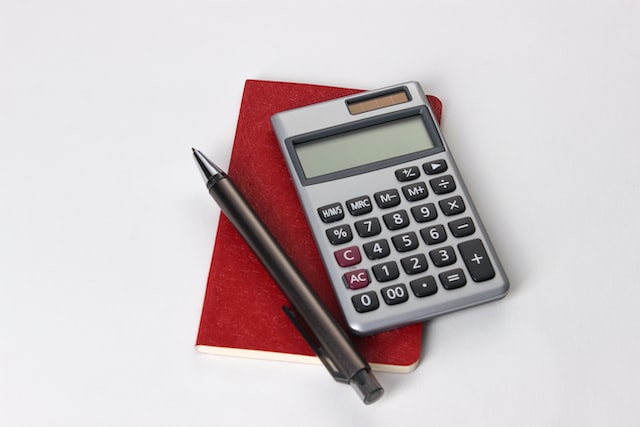A monthly budget is one of the most critical tools, regardless of your income or financial position. When you track your spending habits, you can become aware of trends you may not have seen before, such as spending roughly $70 per month on lunch-break coffees. Noticing these trends is an important step in understanding your actions and acknowledging that a change is necessary.
“A budget simply tells us how much money is coming in, how much is going out, and where it’s going—and this is essential information for everyone,” Jonathan P. Bednar II, CFP of Paradigm Wealth Partners in Knoxville, Tennessee, told The Balance via email.

According to Debt.com’s 2021 budgeting poll, up to 80% of Americans believe they stick to a budget. According to the report, the two most prevalent reasons for budgeting are a desire to build wealth or savings, or being motivated by debt.1 Discover the measures you should take to construct an efficient and usable budget, ultimately leading to a financially secure future.
The 50:30:20 Rule
When it comes to budgeting, the simpler the better, as a complex budgeting procedure is less likely to result in consistency. The 50/30/20 rule is a popular budgeting approach that divides your spending into three categories: necessities, wants, and savings or debt payback, utilizing net income.
The rule states that you should budget 50% of your income for critical costs. “This includes housing, utilities, auto payments, groceries, gas, minimum monthly debt payments, insurance premiums, etc.,” Bednar told me. Bednar recommends that no more than 30% of this cash go toward your home payment.
The next 30% of your net income should be set aside for personal spending, or things you really want but don’t need. “These are items that you could cut if you had to, like dining out, hobbies, entertainment, gym memberships, and fun, monthly subscription boxes,” Bednar told me.
According to Bednar, the final 20% of your budget is the most important component, because what you do with it will determine whether or not you are financially successful. “This portion of your budget goes toward your financial goals—things like paying off debt, saving for an emergency fund, saving for a home, and investing.”
While it’s tempting to make minimum debt payments and save the rest at the end of the month, Bednar warns against it. “What usually happens is that there is nothing leftover, so if you don’t deliberately budget for those things, they’re unlikely to happen,” Bednar told me.
Note
If you have high-interest debt, you might want to consider switching the demands and savings components of your budget. “When those high-interest debts are dragging you down, it’s impossible to make any progress on your other financial goals,” according to Bednar. Putting aside an extra 10% of your income to pay off debt might save you thousands of dollars in interest.
Calculate your income.

After settling on a budgeting method, the following step is to calculate your monthly income. “If you work for an employer as a W-2 employee, they will take care of all of the tax withholding, so you can use your after-tax income amount to create your budget,” Dave Henderson, CFP, ChFC, CLU, a self-employed advisor with Jenkins Wealth in Colorado, told The Balance in an email. If you are self-employed, you must deduct your self-employment tax before computing your net monthly income.
Note
When determining your revenue, remember to include all sources. If you work numerous jobs, own a side business, or get child support or government benefits, those expenses should be factored into your monthly income.
List all your expenses.
Determine what is coming into your bank account and what is going out. “You can do this by reviewing your credit card statements, as well as your bank statements for the last two-to-three months to determine where your money has been going,” Henderson told me.
Some expenses are permanent and remain the same month after month, while others are variable and change frequently, such as groceries and entertainment. With variable spending, it’s useful to review your receipts from the past few weeks or months and calculate an average.
Note
Consider keeping a daily expense journal to understand what you’re actually spending your money on. Small expenses, such as dashing out for coffee or grabbing a snack on your way home from work, are often neglected, so keep track of them in the present.
Create and track your budget.

Now that you have the necessary information for a budget, it’s time to establish one.
While you may simply track your monthly spending patterns using a pen and paper, there are various budgeting applications and software tools that can help.
Mint, a famous budgeting program, is Bednar’s favorite because it is easy to use and free. Mint, like most others, will want you to provide information about your financial accounts, such as credit cards and stocks. These will be linked to the app and viewable in one location, guaranteeing that all tracked data is correct and up to date. According to Bednar, Mint generates a budget based on the information you submit, but you may also customize it.
According to Bednar, below is an example of how the 50/30/20 rule may appear for someone with a net monthly income of $5,000.
50%: $2,500 30%: $1,500 20%: $1,000
Mortgage: $750.Dining out: $350 401(k) Contribution: $500
Utilities cost $400Hobbies cost $250.Emergency fund: $200.
Car payment: $300.Self-care costs $150.ROTH IRA contribution: $300.
Groceries cost $400Entertainment: $300.
Gas: $50Clothing costs $200.
Insurance costs $400.Household Items: $150
Student Loan: $200.Charitable contributions: $100
Once you’ve created your budget, whether online or on paper, keep track of your progress. “You will quickly see that there are some categories in the budget where adjustments need to be made,” Henderson told the audience. “You may find out that you are spending way too much money on entertainment, for example, and not putting enough money into savings.”
Note
If you’d prefer a simpler option, the Federal Trade Commission also provides a budget worksheet.
By reviewing these budget gaps, you can make necessary modifications. It’s also important to remember that a budget is only beneficial if you track and update it on a regular basis to reflect changes in your income and expenses.
Sponsored: Checking Today, Savings Tomorrow.
Meet the Checking and Savings account that is right for you. SoFi makes it easier to save and earn interest on your balance. Earn up to 4.20% APY and up to $300 when you set up direct deposit, as well as benefits such as no account fees, overdraft protection, and more. You may also be able to receive your paycheck up to two days early. Open an account today and start earning competitive savings rates. Terms apply.
